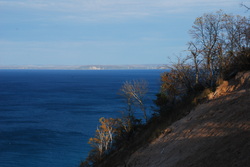
It's hard to believe that Fall Break happened over a week ago - with midterms, problem sets, and the poster session, time has been flying by here at SPH. Thankfully, Fall Break this year was actually a break (last year all of the midterms were after the break, so it was more of a "break from class so you won't be distracted while you study" type of a vacation), so I figured that I'd use the time to go explore Michigan. The area around Ann Arbor is nice - lots of rivers, streams, and lakes - but I'd never seen the northern half of Michigan and so decided to camp at Sleeping Bear Dunes for a few days. The weather was perfect - high 60s and sunny - and since it was the middle of the Fall, the campsites were fairly empty (at least we didn't have to contend with lots of loud RVs at night). We also managed to hit that point right before the leaves drop off the trees, so the drive north to Traverse City (only about 4 hours) had lots of nice scenery along the way. The camping was different than I'm used to (there was actually running water and permanent toilets!), so "roughing it" isn't really an apt description of the facilities. The park has lots of nice trails that wander through the dunes, and it's easy to forget that you're standing on sand that was dropped here at the end of last ice age when you're walking through the middle of a forest. Once you make it through the dunes, the views out over Lake Michigan and across to the Manitou Islands are great. There's even a dune climb where you can hike up the hills for a bit and over to the lakeshore (although running down on the trip back is more fun...).  This trip was my first time seeing one of the Great Lakes, and it was weird to see waves in something that didn't have a salt spray. The more I explore Michigan, the more I come to like the state - it's much different than I had expected when I moved here, and there's lots of state parks and forests to explore. All in all, the trip up north was a great way to escape school and homework for a few days, and it's inspired me to plan a trip to the Upper Peninsula sometime next year - after the snows melt, of course.
3 Comments
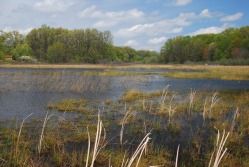 It's hard to believe that I'm halfway done with my MPH - the first year went by too quickly, and the end of the year stress (finals, final projects, etc.) helped it to fly by even more quickly. After finals ended, I noticed something strange - the snow was gone and the weather was gorgeous (lows in the 50's, highs in the mid-70's... while winter is brutal it is hard to dislike MI in the spring). Given the nice new weather, I decided to explore MI a bit with another epidemiology student, and we found two nice hikes that were good escapes from Ann Arbor. One thing that I miss in MI are the hills - I could see mountains from my undergrad and hometown, and when I worked in Germany I was in one of the hillier regions, so MI is oddly flat to me. Since I was used to this terrain, I just assumed that hiking = walking around in hills and mountains, and that hiking around a flat plain wouldn't be all that much fun. Needless to say, I was wrong. We found a bog near Kalamazoo (yes, that's a real place name) and decided that it would make for an interesting adventure, seeing as how I'd never seen a bog before. It was a nice change from the hills and mountain streams that I was used to - all of the plants were different, there were more birds, and there were a few snakes and frogs to keep things interesting. 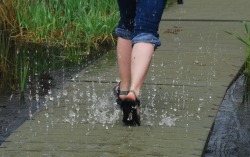 However, the trail was probably the most fun part of the hike. It went right over the bog (I'm not sure how they did it, the plastic boards didn't seem to be anchored to the ground but they were very stable) and if you moved too quickly you could get a bit wet. We didn't expect that the trail would fight back, so the first few steps were a bit wetter than we had anticipated, but after getting adjusting for the surprising squirts it was a nice way to cool off and it always made for a nice surprise. On the way back from Bishop's Bog, we stopped at Bell's Brewery, which has some of Michigan's best local beer and should be a required stop if you find yourself in the area. I'll be heading off to Malawi for my summer internship soon (more on that later), but when I get back to MI I'm looking forward to exploring more of what the state has to offer - especially since I'll only have one more year to take advantage of it.
When you think about malaria, chances are high that the United States is not the first country that comes to mind. However, malaria was endemic in the US until the late 1940's, and the high prevalence of malaria in the Southeastern US is one of the main reasons why the CDC headquarters is located in Atlanta. Malaria has a long history in the US. Until 1880 it was thought that malaria was caused by bad air ("malaria" comes from the Medieval Italian for "bad air") and it wasn't until 1898 that Sir Ronald Ross of Britain proved that malaria is transmitted by mosquitos. Our capital was built on a swamp (truly a wonder of modern urban planning) and in the summer was notorious for diseases including malaria and yellow fever. It's easy to forget that until as recently as a century ago, much of the US was still a developing country - industrial manufacturing was low and most people lived in small towns and worked on family farms. The population density was low in many regions and low-lying fields were good farmland and ideal breeding grounds for the mosquitoes that carried malaria when they flooded. Malaria was such a problem in the US that the US Census of 1870 released a map showing areas in the US where malaria prevalence was high (see below). The map is courtesy of the US Library of Congress and can be found in its original context here.
Michigan's reputation as a hotbed of malaria was well known, as the following quote from the Bulletin of the Medical and Surgical Sanitorium (Battle Creek, Michigan, 1892) shows: "But what about Michigan malaria? Unfortunately for the reputation of Michigan as a healthful State, the idea got abroad many years ago that the principal feature of its climate was malaria. Going to Michigan was considered almost synonymous with going to have a fit of the ague. It was not supposed to be possible for a person to visit Michigan or even to pass through the State without having the chills." Apart from being a mere historical curiosity, the high prevalence of malaria in Michigan served as a barrier to development - the rural regions of Central Michigan stand in sharp contrast to the well-developed Southeast and are a legacy of peoples' hesitancy to venture further inland. So how did we eradicate malaria in the United States? Public health. Even before it was known that malaria was transmitted by mosquitoes, people would clear swamps to reduce the incidence - a classic example of how you can solve a health problem without knowing the exact cause of disease if you understand the risk factors. Once we figured out that mosquitoes were the culprit, much of the eradication effort focused on their elimination. Common practices included land improvement, removal of mosquito breeding sites, and heavy insecticide use. DDT was the most commonly used insecticide, and its use in the 1940's to eliminate malaria lead to severe environmental consequences (for more, see Silent Spring). A very nice (and brief) history can be found here. I was a bit nervous about moving up to Ann Arbor - it's a small college town in the middle of farm country, and it didn't have any of the natural attractions that I've gotten used to, like mountains or a place to dive. This weekend, my fears were alleviated upon discovering a great Midwestern tradition - cider and doughnuts. Being in the middle of farm country has it's advantages. The first of these is that Ann Arbor is surrounded by small, former farming towns with old(ish) buildings, main streets, and central parks. Dexter is a great example of one of these towns. It's about 10 miles away and it has a downtown with a few unique coffee shops, bars, and restaurants, but the main draw is the Dexter Cider Mill. It's the oldest cider mill in Michigan, and if the crowd yesterday was any indication, it's still doing a pretty brisk business.
Luckily, the mill has managed to keep a nice feel about it - you can watch every part of the cider-making process and then purchase a surprising array of apple-related products (apple bread with apple butter and cheese anyone?), but the cider itself and the fresh cinnamon-sugar doughnuts are clearly the main draw. Once you purchase your cider and doughnuts, you can walk a few feet down and eat/drink them along the Huron River (much shallower than I thought that it would be). Sadly, the cider mill is only open for part of the year, so I'll have to get as much out of it while I still can. 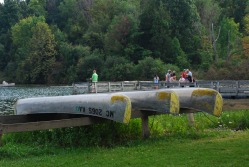 Since classes haven't started yet and my fellow students and I are, for all practical purposes, essentially at summer camp for the next few days, we decided to explore the area around Ann Arbor. Our main requirement was that we find somewhere that we could swim (not as hard as we'd thought, MI is full of lakes) and that it be within an hour's distance. Pickney Park (the name is ridiculous) fit the bill nicely. It's a State Recreation Area about 30 minutes Northwest of Ann Arbor, and contains about a dozen lakes, two of which allow swimming (it's possible in the rest, but these are rather marshy). So off we went, passing some quaint little towns and a pumpkin donut/cider stand (this will warrant further investigation) along the way. The weather cooperated, and at the lake we just hung around, played cards, frisbee (poorly), and soccer (also poorly) - nothing terribly exciting. All in all, it made for a pleasant day and a nice introduction to the area before winter destroys me.
|

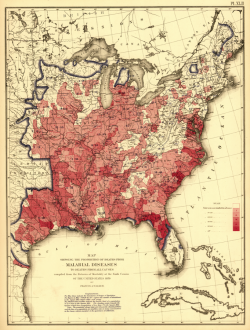
 RSS Feed
RSS Feed